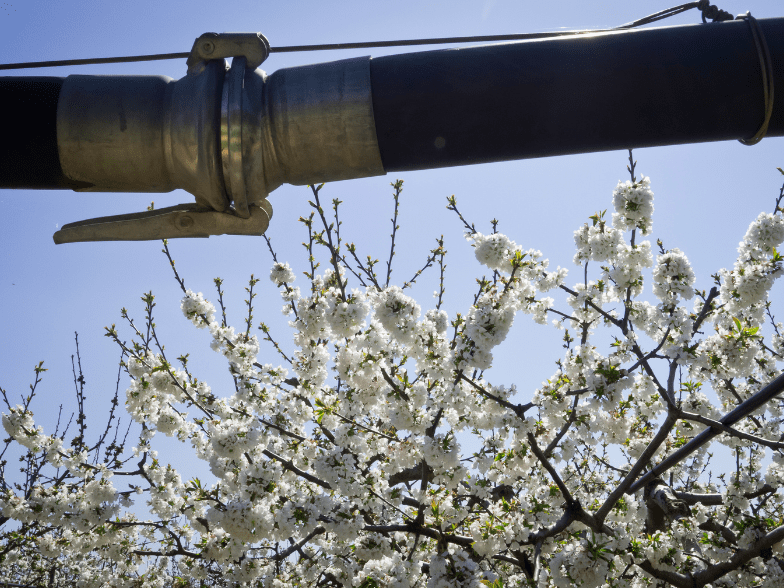
Irrigating Cherries Pre/Post Harvest
Pre-Harvest
The first thing on everyone’s mind during this time is weather; specifically, rain or high temperatures. Reference evapotranspiration (ET) is a parameter that can be quite useful when putting together irrigation strategies leading into harvest. Certain weather like high temperatures and wind drive water use in plants. Therefore, monitoring ET can help forecast potential water use while a soil moisture probe can give a detailed picture of what’s being put down and what the trees are taking up. Another parameter to consider is rootstock. For example, a mazzard rootstock is a lot more resilient to long dry downs due to its size and vigorous characteristics compared to semi-dwarfing rootstock like certain Gisela. It’s also important to pay close attention to soil types. Loamy sand for instance is going to be more forgiving to an over-irrigation due to its ability to dry down quicker leading into harvest compared to a silt loam, loam. Knowing how all these variables come together leading up to harvest is just another piece of the puzzle in getting quality fruit off the trees and into the bins.
Notice in figures 1 and 2 that there are very different irrigation strategies. Early Robin/Gisela 6 rootstocks/silt loam soils (Figure 1) and the other on Early Robin/Mazzard rootstocks/silt loam soils (Figure 2). In figure 1, 6-8 hour sets were applied every 2-3 days allowing for moderate dry down in the 3rd foot of the soil profile while saturating just the top 12-15 inches leading up until harvest.
In figure 2 we can see a large irrigation towards the end of May pushing well below 2 feet, followed by a significant dry down in the 2nd foot leading into harvest with 3-4 hour sets just barely penetrating down 8 inches every 5-6 days. It’s also important to note that ambient air temperatures during this time ranged anywhere from 72° late May to 100° leading into harvest.
While minor dry downs can be beneficial leading up to harvest, severe drying can cause an array of issues like poor fruit firmness and stem quality in cherries with symptoms differing among varieties. Another important factor to keep in mind when drying down soils is the potential for an increase in spider mite pressure.
Post-Harvest
Cherry harvest is over but that doesn’t mean irrigation is too. The end of cherry harvest usually means sustained high temperatures in Eastern Washington and Oregon. Since trees go through bud differentiation in the weeks following harvest, it’s crucial to not severely stress them in this time. Although irrigation doesn’t need to be as frequent as it would be during cell development it’s still important to make sure trees are getting plenty of water. You can see examples of this in both figure 1 and 2. Harvest on those blocks occurred early June. Mid-June through the end of July irrigation continued, the difference being, longer sets much less often. Traditionally doubling has been greatly reduced through applications like surround or diffusion. Adding overhead cooling to the mix along with regular irrigations can play a role in mitigating that stress put on the trees from high ambient air temperatures. While it has been proven that overheads in cherries are beneficial post-harvest, it’s not very common to find cherry orchards with such setups. Therefore being effective with the setup you have is important over all else.
As I stated before there is no one way to irrigate a cherry block, for every planting is different and should be treated as such. From the weather to the variety to the rootstock and soil type that it’s planted in. Knowing how all these variables fit together can better help you put together an actionable plan when it comes to irrigation.
Christian Medeiros // Irrigation Water Mgmt. Specialist



